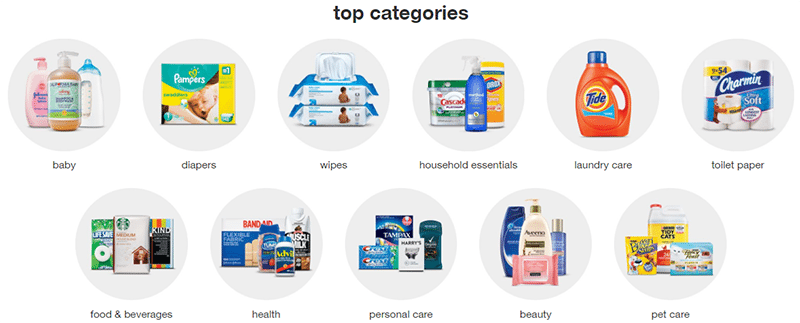Every merchant wants to:
- Convert first time shoppers into loyal customers
- Increase the lifetime value of their customers (CLTV)
- Reduce customer acquisition costs as a percentage of CLTV
There is no better or easier way to increase customer lifetime value than to have a customer subscribe to recurring monthly or quarterly purchases.
- Would you rather sell a single $31 box of diapers? Or 12 boxes at $28 each?
- Would you rather have a predictable revenue stream, or choppy ups and downs in order volume?
Popularity of subscriptions is growing.
Retailers and B2B merchants have caught on to subscription magic, and recent growth in subscription and membership commerce has been tremendous:
- Subscribe and Save
Dozens of retailers offer subscribe and save options for consumer and business staples – e.g. monthly diaper, coffee, or office supplies deliveries. Amazon offers the service in 28 categories, and also enables its FBA merchants to offer Subscribe and Save for their products.
20% of Sales from Subscribe & Save
Puracy is an Austin-based company offering natural personal-car products. In just one year, Subscribe & Save has become 20% of their annual revenue. Subscribe & Save has helped lower their user acquisition costs, provided reliable business, and expanded their brand. The best part about it? “It’s business you can count on.” Source: Amazon
- Monthly Box Clubs
My Subscription Addiction lists over 2,000 “of the month” clubs. Visits to subscription box websites grew by over 3,000% in a 3 year period, up from 722,000 visits in 2013 to 21.4 million in 2016 – Source: Inc. Magazine
Retailer Benefits from Ecommerce Subscription and Continuity Programs
The benefits are clear, yet it’s worth recounting them.
- Higher Lifetime Customer Value. Consider a coffee services company that sells to businesses.
- A portion of annual revenue is locked in and stable.
- Their customers don’t have to think about coffee re-ordering or shipments.
- Coffee and supplies won’t run out, so their customers won’t need to even think about purchasing from a competitor
- The merchant has more opportunities to engage with its customers. According to Narvar’s March 2017 post-purchase benchmark, the click-through-rate on marketing assets that appear on a branded order-tracking page is 3x higher than for marketing emails.
- Lower Customer Acquisition Costs
- The more repeat customers you have, the lower your overall new customer acquisition costs will be as a % of total sales.
- Loyal customers will refer new customers to your business, further lowering total customer acquisition costs.
- Better Inventory Forecasting and Management
The portion of inventory dedicated to subscribe and save customers has close to a 100% likelihood of being sold and shipped. Therefore, a known proportion of inventory will have the highest possible inventory turns, reducing overall inventory costs as a percentage of sales, and yielding a higher return on capital.
Ideal Products for Subscriptions and Continuity
Typical subscription products share a handful of characteristics:
- The items “run out” or get “used up” in a predictable time frame.
Batteries, diapers, socks, water and air filters, office printer ink, coffee, and home cleaning products all get worn out or used up on a fairly predictable basis.
- Running out is an inconvenience.
You want batteries when the remote control dies. Running out of diapers is… messy.
- Following are just a few categories to give you a sense for the types of products that can do well in a subscription model:
-
- Health, household & baby care: Diapers and detergents
- Beauty and Personal Care: Razors, hygiene products and soaps
- Automotive parts: Filters, cleaning cloths
- Office products: Paper, Dry-erase markers, printer ink and toner
- Sports & outdoors: Sports tape, sports drinks, vitamins
- Clothing: Socks, boxers
- Electronics: Batteries
- Pet Supplies: Dog treats and puppy pads
Target’s Subscribe and Save Page
How to Manage a Successful Subscribe and Save Program
There are many operational requirements to consider:
- Payment processing on an automated basis
- Order entry, processing and approval on a scheduled basis
- Inventory allocation and forecasting based on subscriptions and non-subscription sales
- Discounts for subscribe and save
- Easy customer self-service options – e.g. subscription cancellation or modification, address change, skipping a delivery, credit card updates, etc.
- Timely customer communications and personalized email updates
Order and Inventory Management Software simplifies this complexity.
If your commerce technology stack already includes an Enterprise Order and Inventory Management system (OMS), such as the one from Pulse Commerce, then you may already have the tools in place to capitalize on subscription opportunities. In-depth subscription management features are not native to all order management systems, so you’ll need to explicitly inquire about the capability.
Whether your online storefront is running on a homegrown ecommerce platform, or on a cloud provider’s, like Shopify Plus, Magento, or BigCommerce Enterprise, a competent order and inventory management system can streamline every step required for a successful subscribe and save program roll out.
In conclusion, product subscriptions and continuity orders offer significant upside as long as you have the necessary technology and automation in place. Read 11thStreetCoffee’s case study to learn how a mid-market merchant successfully implemented a Subscribe and Save program. And to learn more about other ways to increase loyalty and customer lifetime value, you might enjoy our webinar, Building an Effective Digital Loyalty Program in the Amazon Age.


